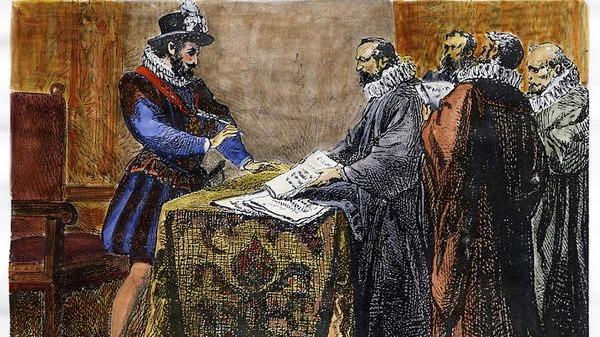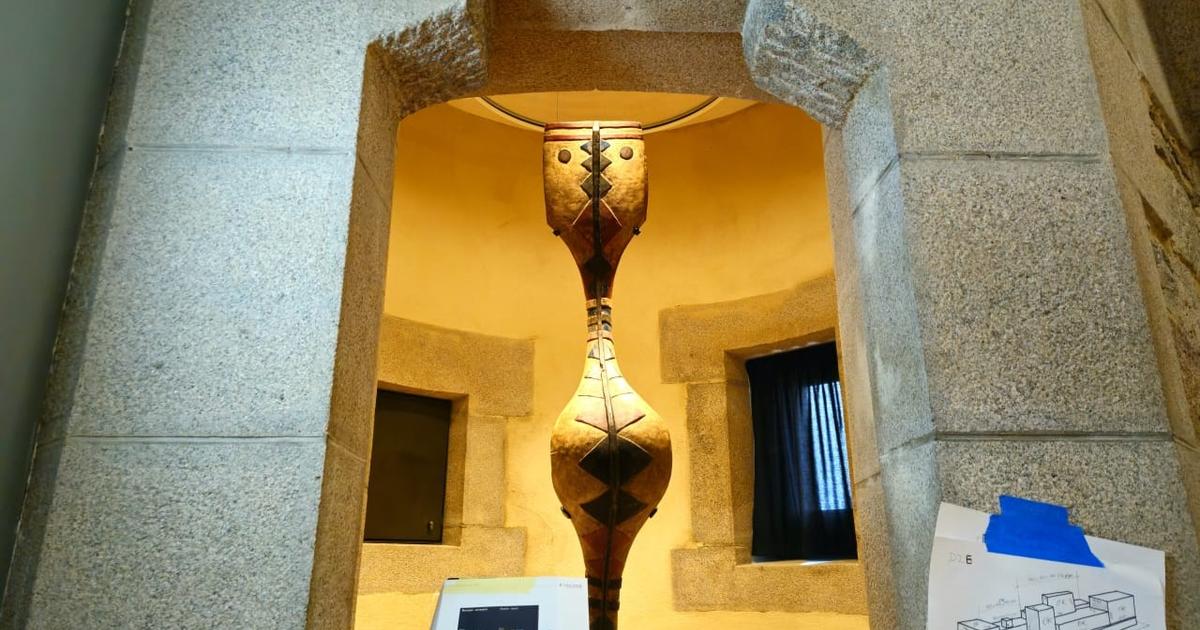An exhibition on the wars of religion opened on Wednesday April 5 at the Musée de l'Armée in Paris.
La Haine des clans
is the title of this exhibition.
It deals, as one of its commissioners, Olivier Renaudeau, puts it, with a period "extremely complex politically" and which "upset French society", from 1559 to 1610.
The original of this edict, which consecrates the coexistence between Catholics and Protestants must put an end to violent conflicts in 1598, is on loan from the National Archives.
This document “has rarely been exhibited”, underlines the curator.
It was only for the first time in 2004. The Edict of Nantes comes at the end of violent conflicts which have exhausted the country, with no less than eight phases of war between Catholics and Protestants.
"Henry by the grace of God Roy of France and Navarre", reads the first line, about the sovereign Henri IV.
"La Haine des clans" depicts the rivalries between families of the two faiths, who fight not only for their faith but above all for their political influence: Valois, Guise, Coligny, Montmorency, Bourbon.
Read alsoOn April 13, 1598 Henri IV by signing the Edict of Nantes, pacifies France
The event of these wars of religion that has remained engraved in the collective memory is the massacre of Saint-Barthélemy, unleashed in Paris on August 24, 1572. A room is devoted to it, lined with a reproduction of a known painting featuring this violence, by the Protestant François Dubois.
A 1619 copy of the voluminous "History of the Martyrs", which lists the victims, gives an idea of the scale of the killings.
They will cause 10,000 deaths throughout France.
Armor worn by the protagonists of these wars, paintings and tapestries, documents that we would today call propaganda are also to be seen along the route.
But also relics of the beginnings of French colonization at the same time, such as an astonishing club brought back from Brazil, where "a mixed colony was established, in the bay of Rio, between Catholics and Protestants", details Christine Duvauchelle, another commissioner of the exhibition.




